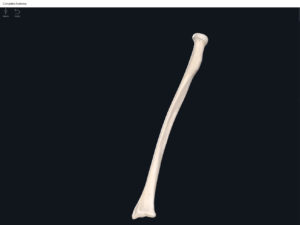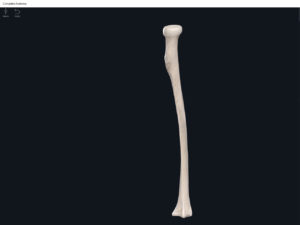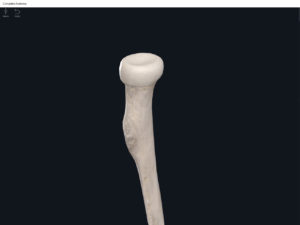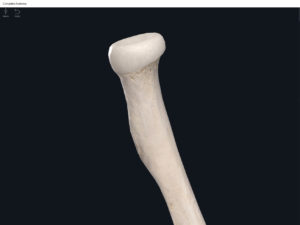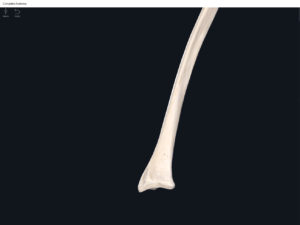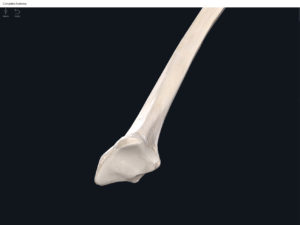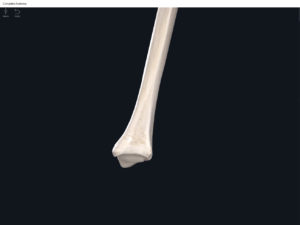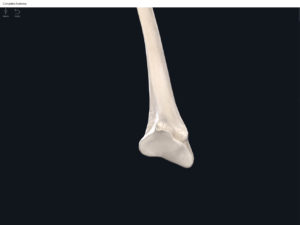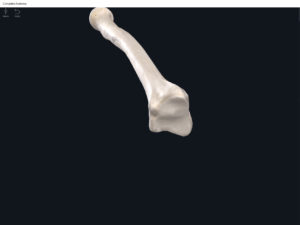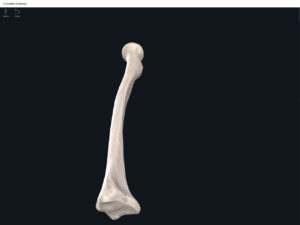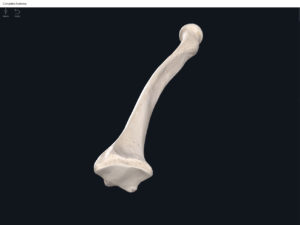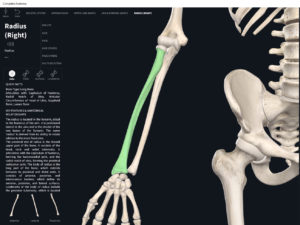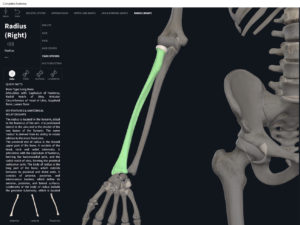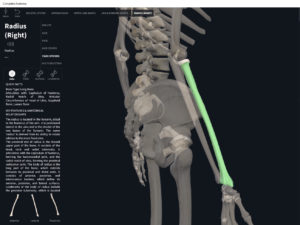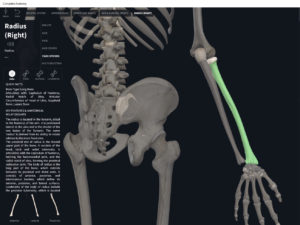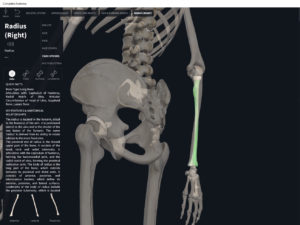Anatomy & Physiology: Bones—Radius.
Structure.
- The forearm bone on the thumb side. You can remember this as “Thumbs up for Rad!”
- It is smaller and shorter than the ulna.
- Head: radial head at the proximal end articulates with both the capitulum of the humerus and the radial notch of the ulna.
- (of radius)
- Radial tuberosity.
- Ulnar notch: at the distal end, medial side, articulates with the ulnar head.
- Styloid process: at the distal end, lateral side. Easily palpateable.
- Radius (distal end) also articulates with 3 bones of the wrist: lunate, scaphoid, and triquetrum.
Function.
Clinical Significance.
References
Biel, A. (2015). Trail guide to the body: A hands-on guide to locating muscles, bones and more.
Cedars-Sinai. (2018). Vertebrae of the spine. Retrieved from https://www.cedars-sinai.org/health-library/diseases-and-conditions/v/vertebrae-of-the-spine.html
Jenkins, G., & Tortora, G. J. (2012). Anatomy and Physiology: From Science to Life, 3rd Edition International Stu. John Wiley & Sons.
Muscolino, J. E. (2017). The muscular system manual: The skeletal muscles of the human body.
